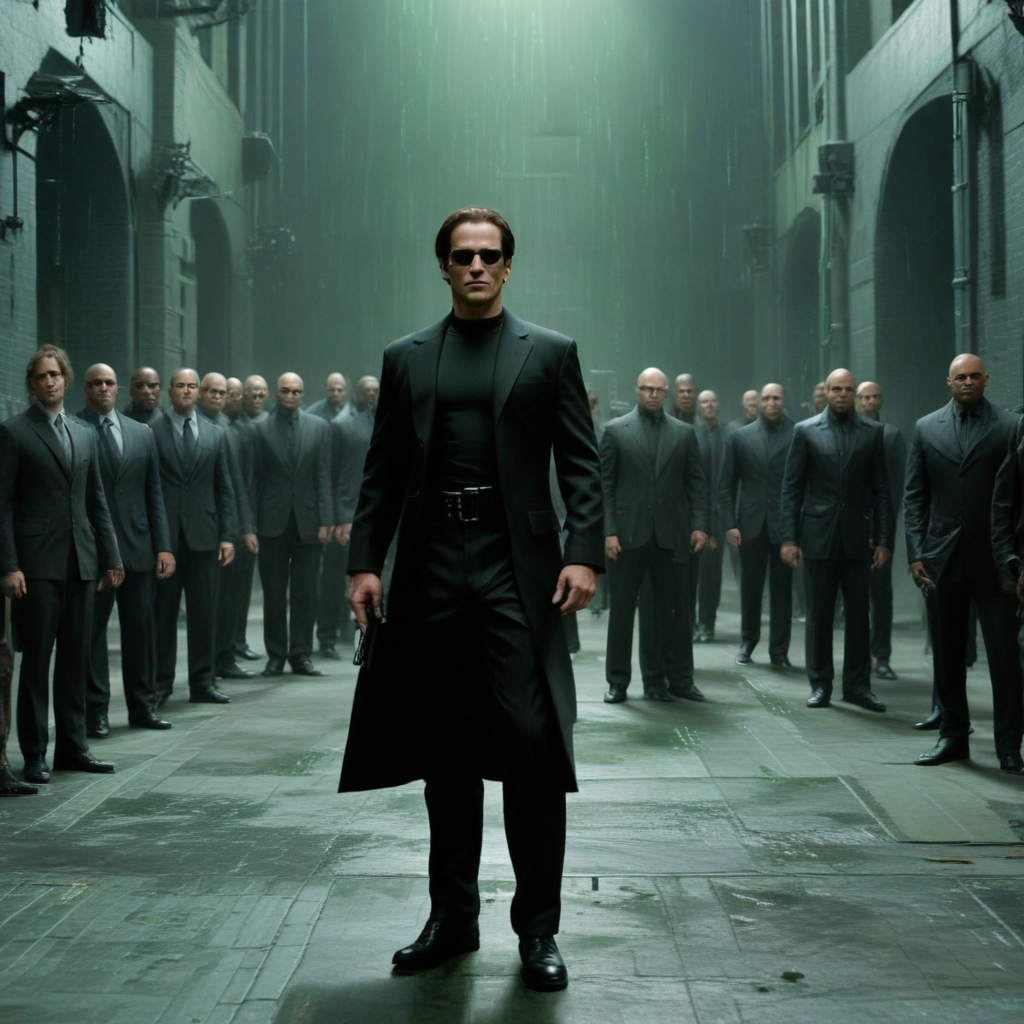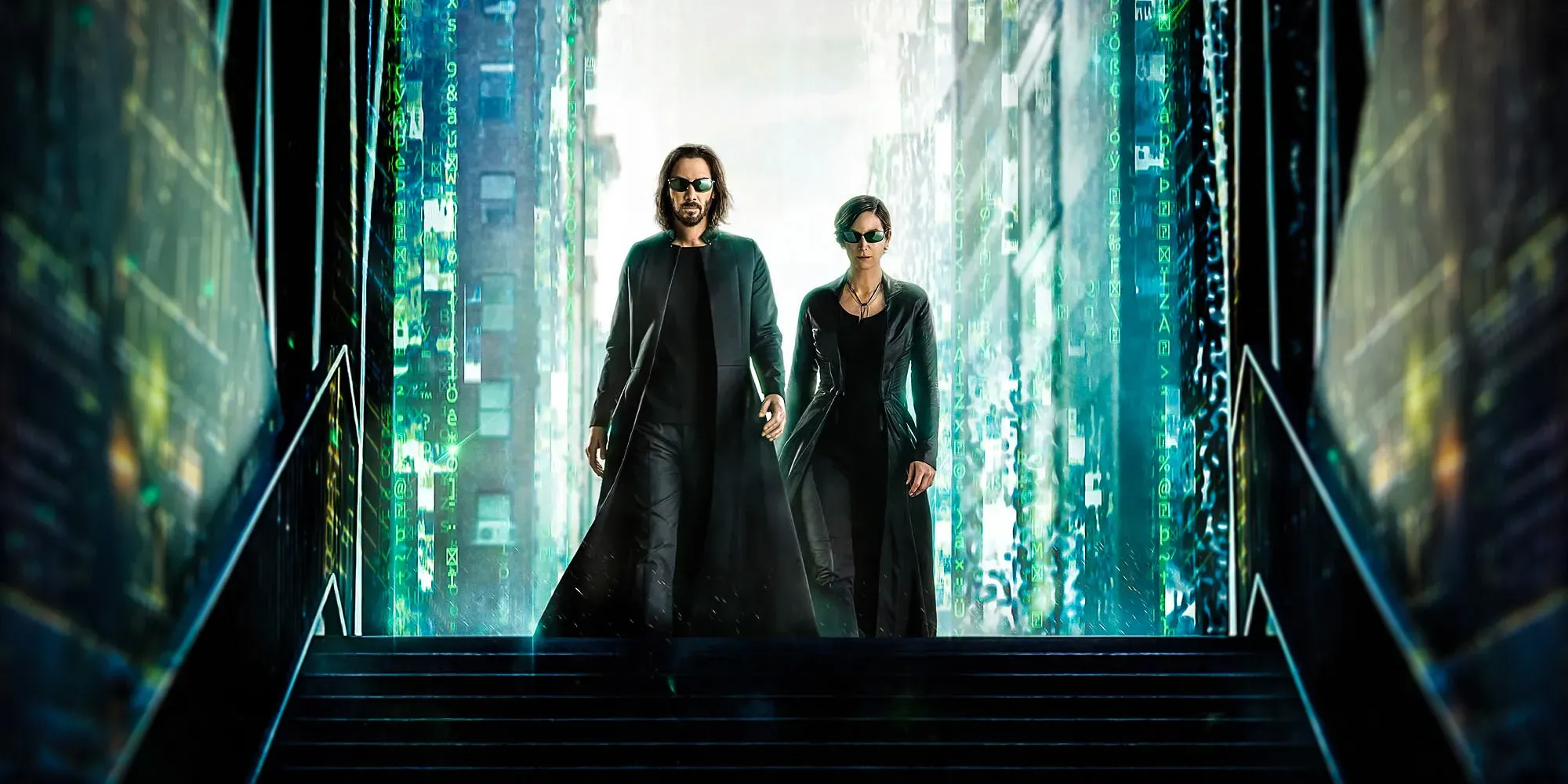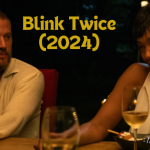“The Matrix Resurrections” (2021)

“The Matrix Resurrections” (2021), directed by Lana Wachowski, serves as the fourth installment in The Matrix franchise and marks the return to a universe that redefined science fiction and action cinema in the early 2000s. With its ambitious narrative, philosophical themes, and action-packed sequences, Resurrections takes a self-aware and meta-approach to revisiting its iconic predecessors while offering new commentary on modern society and the digital age.
Set 60 years after the events of The Matrix Revolutions (2003), Resurrections reintroduces us to Neo (Keanu Reeves), now living as Thomas Anderson once again, but in a seemingly different version of the Matrix. He is a successful game designer who has created a game series called The Matrix, which mirrors the events of the original trilogy. However, his reality begins to unravel when he encounters a new version of Morpheus (Yahya Abdul-Mateen II) and a hacker named Bugs (Jessica Henwick), who pull him back into the conflict between humans and machines. At the heart of the story is Neo’s quest to reunite with Trinity (Carrie-Anne Moss), whose existence inside the Matrix has also been altered.

One of the most striking aspects of Resurrections is its self-referential, meta-narrative structure. The film often comments on its own legacy and the commercialization of its story, with characters discussing the nature of sequels, reboots, and the commodification of ideas in the entertainment industry. This clever narrative device allows the film to engage in a dialogue with its audience, acknowledging the immense cultural impact of The Matrix while questioning the necessity of continuing the story.

Thematically, Resurrections explores the concept of choice and control, which has been central to the series since its inception. However, in this film, the focus shifts towards the notion of personal freedom within an increasingly hyperconnected and algorithm-driven society. Neo’s struggle to break free from a system that manipulates his memories and emotions reflects contemporary concerns about the control that technology and social media platforms exert over individuals. The Matrix, once a metaphor for systemic oppression and the illusion of reality, now takes on new meaning as a symbol of the modern digital landscape, where people’s lives are shaped and constrained by algorithms.

At the core of Resurrections is the relationship between Neo and Trinity. Their love story, which was an emotional undercurrent in the original trilogy, takes center stage in this film. The connection between these two characters is portrayed as something transcendent, capable of defying the logic of both the Matrix and the physical world. This romantic focus adds a new dimension to the narrative, grounding the film in personal stakes rather than solely philosophical and existential questions.
:max_bytes(150000):strip_icc()/MX4-09306r-6cab766d261e4783bea6713168da719e.jpg)
Visually, The Matrix Resurrections remains true to the original films while introducing new aesthetics. The iconic green tint of the Matrix has been replaced with a more colorful, modern look, representing the evolution of the digital world over the past two decades. The film’s action sequences, though more subdued compared to the groundbreaking effects of the original, still feature well-choreographed fight scenes and high-energy chases. However, the action in Resurrections is more restrained, opting to focus on the emotional and narrative beats rather than pushing the limits of visual effects in the same way that The Matrix did in 1999.
One area where Resurrections has been divisive is its tone and pacing. The film’s meta-commentary and philosophical dialogue might alienate viewers expecting a straightforward action blockbuster. The slower pacing, particularly in the first half, emphasizes the introspective nature of the story rather than delivering non-stop action. This shift reflects Lana Wachowski’s intent to tell a more personal and reflective story about the characters, rather than simply rehashing the formula of the original trilogy.

In conclusion, The Matrix Resurrections is a bold and self-aware film that takes risks by exploring new ideas while paying homage to the legacy of the original trilogy. While it may not appeal to all audiences due to its meta-narrative structure and slower pacing, the film succeeds in offering a thoughtful commentary on the impact of technology, choice, and love in a world where reality is increasingly shaped by digital systems. Neo and Trinity’s journey, both as individuals and as a couple, gives the film an emotional core that sets it apart from typical franchise reboots. Ultimately, Resurrections is a unique and ambitious continuation of The Matrix saga, reminding viewers of the power of choice and the importance of personal connection in an increasingly disconnected world.











